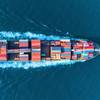The Arctic has lost almost 95% of its older ice cover since 1984, says NASA. The area covered by Arctic sea ice at least four years old has decreased from 1,860,000 square kilometres in September 1984 to 110,000 square kilometres in September 2016.
ABC News quoted a report produced by the Arctic Council -- an intergovernmental forum of eight member countries that include the U.S., Canada and Russia -- stressed that changes to the Arctic have "global implications," including feedback loops, a phenomenon that could lead to the rapid acceleration of ice melt and in turn raise global temperatures and exacerbate sea-level rise.
Rising sea levels are already battering America's coastlines, and threatening to cause entire islands to disappear underwater.
External factors, primarily human activity, is blamed in the report: "Much of the increased pace and scope of Arctic change can ultimately be linked to the impacts of human activities," it says.
According to the Artic Resilience Report, temperatures are “off the charts,” being as they are about 20 degrees Celsius above what would be normal at this time of year.
“It’s been about 20C warmer than normal over most of the Arctic Ocean, along with cold anomalies of about the same magnitude over north-central Asia. This is unprecedented for November,” said research professor Jennifer Francis of Rutgers University.
Instead of growing, the level of sea ice is actually decreasing. This is a very unusual event because normally, ice levels in the North Pole returned to base-line values during this time of the year.
This is happening due to the intense warmth originating from the oceans and the air.














